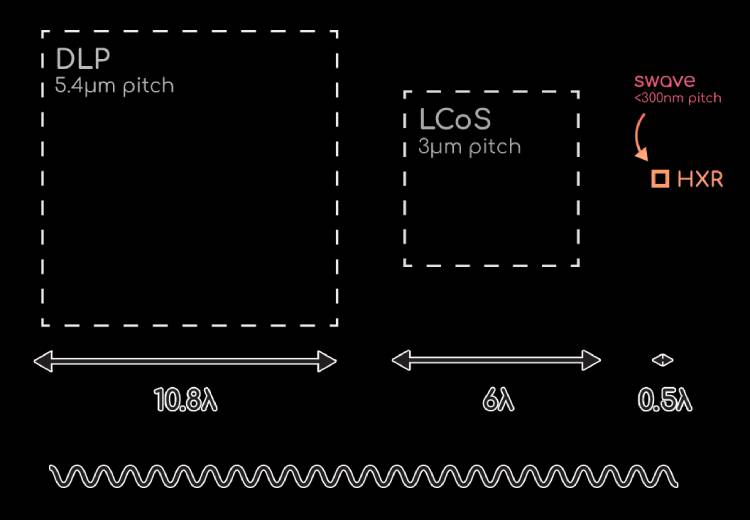
In Augmented Reality News
January 13, 2025 – Swave Photonics, a provider of holographic display technology, has recently announced the close of a EUR €27 million (USD $28.27 million) Series A funding round. Swave stated that the investment will catalyze the advancement of its Holographic eXtended Reality (HXR) platform, through which the company aims to enable a “reality-first user experience” for AI-powered augmented reality (AR) smart glasses and heads-up displays (HUDs).
The funding round was co-led by investors imec.xpand and SFPIM Relaunch, with participation from new investors EIC Fund, IAG Capital Partners, and Murata Electronics North America, Inc., as well as existing investors Qbic Fund, PMV, imec, and Luminate.
Swave previously raised a EUR €10 million (USD $10.47 million) Seed round in 2023, which helped the company with the launch of its HXR technology, as well as the expansion of its team.
“This round will accelerate Swave’s product introductions as we continue to solve the challenges of today’s AR experiences through true holography,” said Mike Noonen, Swave CEO. “We are thrilled with continued support from our existing investors and our new investors. They recognize that Swave uniquely brings together semiconductor, holographic and AI technologies in a way that will deliver cost-effective and truly useful solutions.”
Swave’s HXR technology utilizes what the company states is “the world’s smallest pixel” to shape light and sculpt 3D holographic images, allowing for a user experience where digital information interacts and adapts to a user’s surroundings in order to create images that the human vision system is able to process naturally.

According to Swave, augmented reality devices continue to face challenges such as high cost, uncomfortable size and weight, significant power usage, and visual phenomena like Vergence-Accommodation Conflict, which cause nausea or fatigue for users. The company stated that its HXR technology not only solves these issues, but also eliminates the need for the most costly components of AR devices, such as waveguides or varifocal lenses.
“AR glasses are set to become the primary interface for AI-powered spatial computing and other applications, and Swave is uniquely positioned to enable this future,” said Theo Marescaux, Swave co-founder and Chief Product Officer. “We are co-designing every element—from our holographic SLMs with cutting-edge nano-pixels, to real-time compute chips, light engines, and AR combiners—delivering the most advanced and integrated solution yet.”
Swave’s technology has been developed for over a decade and the company currently holds 60 core technology patents. The company first announced its HXR platform in April 2024. Thanks to this latest Series A funding Swave is now on track to introduce product development kits, with production devices to follow soon thereafter, according to co-founder and Chief Operating Officer Dmitri Choutov.
For more information on Swave Photonics and its holographic display technology for augmented reality smart glasses, please visit the company’s website.
Image credit: Swave Photonics
About the author
Sam is the Founder and Managing Editor of Auganix. With a background in research and report writing, he has been covering XR industry news for the past seven years.
